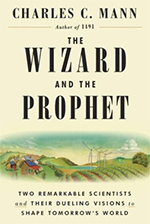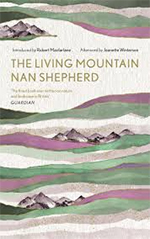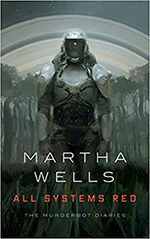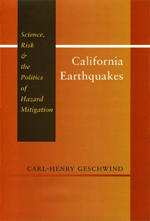20 January 2020
Book report
Posted by Callan Bentley
It’s been a busy month, and I owe you all some blog posts. Forgive me – my writing energies have been focused elsewhere lately. Now that the semester has started, however, I hope to right that wrong with more regular posting. For now, here’s a four-part book report on recent reading…
The Wizard and the Prophet, by Charles C. Mann
 A comparison between two ways of looking at the relationship between humans and the problems of living in the natural world, as exemplified by two scientists, neither of whom I had previously heard of: Norman Borlaug and William Vogt. Mann (author of 1491 and its sequel, 1493) set up Vogt as a plausible font for the modern environmental movement, and the idea that when science teaches us that nature limits populations, we can and should use that insight to trim back our own societal excesses, to live better within our own planetary means. Vogt was worried that humanity was headed for disaster by letting our population grow beyond the planet’s carrying capacity. His 1948 best-selling tract The Road to Survival set forth these ideas and led to the vibrant modern “apocalyptic” strains of environmentalism. Vogt is the titular “prophet.” Borlaug, in contrast, is the engineer who thinks he can fix nature, to bend physical processes to the will of our intention and understanding. Of the two, it seems Borlaug is the better known in the present day, largely through is groundbreaking efforts at breeding disease-resistant strains of wheat. Wheat yields increased by an order of magnitude, and because his wheat was adopted in places like India, Pakistan, and Mexico, the “wizard” Borlaug is credited with saving more than a billion human beings from starvation. He was the spark that lit the Green Revolution; He got a Nobel Peace Prize for this critical work. So Mann’s book is at once a duplex biography of these two men, and also an examination of how their two worldviews take on challenges like clean water, agriculture, and climate change. I found it a thought-provoking volume, though the essential set-up, that there is an irreconcilable dichotomy between their approaches, seems to me a false premise. As author, Mann himself acknowledges this, and doesn’t advocate for one approach or the other. Both wizard and prophet have perspectives we may find useful.
A comparison between two ways of looking at the relationship between humans and the problems of living in the natural world, as exemplified by two scientists, neither of whom I had previously heard of: Norman Borlaug and William Vogt. Mann (author of 1491 and its sequel, 1493) set up Vogt as a plausible font for the modern environmental movement, and the idea that when science teaches us that nature limits populations, we can and should use that insight to trim back our own societal excesses, to live better within our own planetary means. Vogt was worried that humanity was headed for disaster by letting our population grow beyond the planet’s carrying capacity. His 1948 best-selling tract The Road to Survival set forth these ideas and led to the vibrant modern “apocalyptic” strains of environmentalism. Vogt is the titular “prophet.” Borlaug, in contrast, is the engineer who thinks he can fix nature, to bend physical processes to the will of our intention and understanding. Of the two, it seems Borlaug is the better known in the present day, largely through is groundbreaking efforts at breeding disease-resistant strains of wheat. Wheat yields increased by an order of magnitude, and because his wheat was adopted in places like India, Pakistan, and Mexico, the “wizard” Borlaug is credited with saving more than a billion human beings from starvation. He was the spark that lit the Green Revolution; He got a Nobel Peace Prize for this critical work. So Mann’s book is at once a duplex biography of these two men, and also an examination of how their two worldviews take on challenges like clean water, agriculture, and climate change. I found it a thought-provoking volume, though the essential set-up, that there is an irreconcilable dichotomy between their approaches, seems to me a false premise. As author, Mann himself acknowledges this, and doesn’t advocate for one approach or the other. Both wizard and prophet have perspectives we may find useful.
The Living Mountain, by Nan Shepherd
 I’ve not been to the Cairngorm Mountains in northeast Scotland, but I feel almost as if I don’t need to. The experience of being in those mountains is conveyed so effectively, so magically, by Nan Shepherd, that actually visiting them in person seems almost superfluous. Very few books that I’ve read achieve this level of place-based wonder, with Arctic Deams (Barry Lopez), Pilgrim at Tinker Creek (Annie Dillard), Desert Solitaire (Ed Abbey), and Refuge (Terry Tempest Williams) being worthy peers. Introspection is blended with natural history in Shepherd’s book, written in the 1940s but only published in the 1970s. The tiny timeless personal adventure of connecting with nature is made manifest through superbly rendered prose. It’s a delectable book, one that sets the pulse of the naturalist to quickening. Really a top notch piece of writing, and I highly recommend it. The version I read had two companion pieces, by Robert Macfarlane and Jeannette Winterson, which really added to the experience. Macfarlane’s piece in particular I thought to be almost as evocative and well-wrought as Shepherd’s book. His essay places The Living Mountain in literary context, and celebrates it as Shepherd herself celebrated the Cairngorms.
I’ve not been to the Cairngorm Mountains in northeast Scotland, but I feel almost as if I don’t need to. The experience of being in those mountains is conveyed so effectively, so magically, by Nan Shepherd, that actually visiting them in person seems almost superfluous. Very few books that I’ve read achieve this level of place-based wonder, with Arctic Deams (Barry Lopez), Pilgrim at Tinker Creek (Annie Dillard), Desert Solitaire (Ed Abbey), and Refuge (Terry Tempest Williams) being worthy peers. Introspection is blended with natural history in Shepherd’s book, written in the 1940s but only published in the 1970s. The tiny timeless personal adventure of connecting with nature is made manifest through superbly rendered prose. It’s a delectable book, one that sets the pulse of the naturalist to quickening. Really a top notch piece of writing, and I highly recommend it. The version I read had two companion pieces, by Robert Macfarlane and Jeannette Winterson, which really added to the experience. Macfarlane’s piece in particular I thought to be almost as evocative and well-wrought as Shepherd’s book. His essay places The Living Mountain in literary context, and celebrates it as Shepherd herself celebrated the Cairngorms.
All Systems Red, by Martha Wells
 A bit of light, fun science fiction. I’m on a kick of reading more sci-fi by women authors, and this was the most recent volume I consumed. What’s distinctive about it is the perspective: it’s told from the point of view of a “murderbot,” a self-aware security droid with some mechanical and some organic components. It (neither he nor she) is assigned to protect a group of scientists prospecting on a new planet, and when things start going wrong, the intensely shy narrator has to cooperate more intensively with its humans than it is really comfortable with. This perspective makes the book worth reading, more than the actual arc of the story: the mystery and drama and whatnot. Rather than getting cozy with these humans, the murderbot would prefer to darken its faceplate and watch hours of illegally downloaded television programs. But when push comes to shove, the nameless narrator invents some clever tricks. It is sarcastic and cynical, a great personality that keeps the writing fresh. As with Annalee Newitz’s Autonomous, a real delight to me was to read what author Wells imagined it must be like for a robot to communicate with other computers from the inside, a distinctly non-human way of interacting with the non-human world.
A bit of light, fun science fiction. I’m on a kick of reading more sci-fi by women authors, and this was the most recent volume I consumed. What’s distinctive about it is the perspective: it’s told from the point of view of a “murderbot,” a self-aware security droid with some mechanical and some organic components. It (neither he nor she) is assigned to protect a group of scientists prospecting on a new planet, and when things start going wrong, the intensely shy narrator has to cooperate more intensively with its humans than it is really comfortable with. This perspective makes the book worth reading, more than the actual arc of the story: the mystery and drama and whatnot. Rather than getting cozy with these humans, the murderbot would prefer to darken its faceplate and watch hours of illegally downloaded television programs. But when push comes to shove, the nameless narrator invents some clever tricks. It is sarcastic and cynical, a great personality that keeps the writing fresh. As with Annalee Newitz’s Autonomous, a real delight to me was to read what author Wells imagined it must be like for a robot to communicate with other computers from the inside, a distinctly non-human way of interacting with the non-human world.
California Earthquakes, by Carl-Henry Geschwind
 A meticulous history of the societal, economic, and political ramifications of living in the Golden State astride a transform plate boundary. I read this volume because the author is a fellow member of the Geological Society of Washington, and I’ve been very impressed through the years of his thoughtful insights about both science presented at our meetings as well as the behind-the-scenes management of the organization. Seeing his volume referenced in Susan Hough’s Predicting the Unpredictable: The Tumultuous Science of Earthquake Prediction gave me the shot in the arm I needed to track down a copy, and read it. It reads like a dissertation, but I don’t mean that in a bad way. Geschwind simultaneously demonstrates an extraordinary amount of research accomplished as well a mastery of synthesizing it into a story that progresses through time. It was originally published in 2001, so reading it today, I felt that the story was incomplete. I’d love to see a follow-up work that covers changes in the way Californians perceive and plan for earthquakes in the past two decades. Writers like Susan Hough cover this terrain well, and that’s where I’ll steer my own further reading on this topic.
A meticulous history of the societal, economic, and political ramifications of living in the Golden State astride a transform plate boundary. I read this volume because the author is a fellow member of the Geological Society of Washington, and I’ve been very impressed through the years of his thoughtful insights about both science presented at our meetings as well as the behind-the-scenes management of the organization. Seeing his volume referenced in Susan Hough’s Predicting the Unpredictable: The Tumultuous Science of Earthquake Prediction gave me the shot in the arm I needed to track down a copy, and read it. It reads like a dissertation, but I don’t mean that in a bad way. Geschwind simultaneously demonstrates an extraordinary amount of research accomplished as well a mastery of synthesizing it into a story that progresses through time. It was originally published in 2001, so reading it today, I felt that the story was incomplete. I’d love to see a follow-up work that covers changes in the way Californians perceive and plan for earthquakes in the past two decades. Writers like Susan Hough cover this terrain well, and that’s where I’ll steer my own further reading on this topic.


 Callan Bentley is Associate Professor of Geology at Piedmont Virginia Community College in Charlottesville, Virginia. He is a Fellow of the Geological Society of America. For his work on this blog, the National Association of Geoscience Teachers recognized him with the James Shea Award. He has also won the Outstanding Faculty Award from the State Council on Higher Education in Virginia, and the Biggs Award for Excellence in Geoscience Teaching from the Geoscience Education Division of the Geological Society of America. In previous years, Callan served as a contributing editor at EARTH magazine, President of the Geological Society of Washington and President the Geo2YC division of NAGT.
Callan Bentley is Associate Professor of Geology at Piedmont Virginia Community College in Charlottesville, Virginia. He is a Fellow of the Geological Society of America. For his work on this blog, the National Association of Geoscience Teachers recognized him with the James Shea Award. He has also won the Outstanding Faculty Award from the State Council on Higher Education in Virginia, and the Biggs Award for Excellence in Geoscience Teaching from the Geoscience Education Division of the Geological Society of America. In previous years, Callan served as a contributing editor at EARTH magazine, President of the Geological Society of Washington and President the Geo2YC division of NAGT.
If you have not reviewed it, I suggest “Stepping Stones,” Catherine Fowler Billings’ memoir. Not easy to find, you have to Google the title plus her name to avoid an AA book. Her life extends through the 20th century.
Great; thanks.
…Just ordered it.